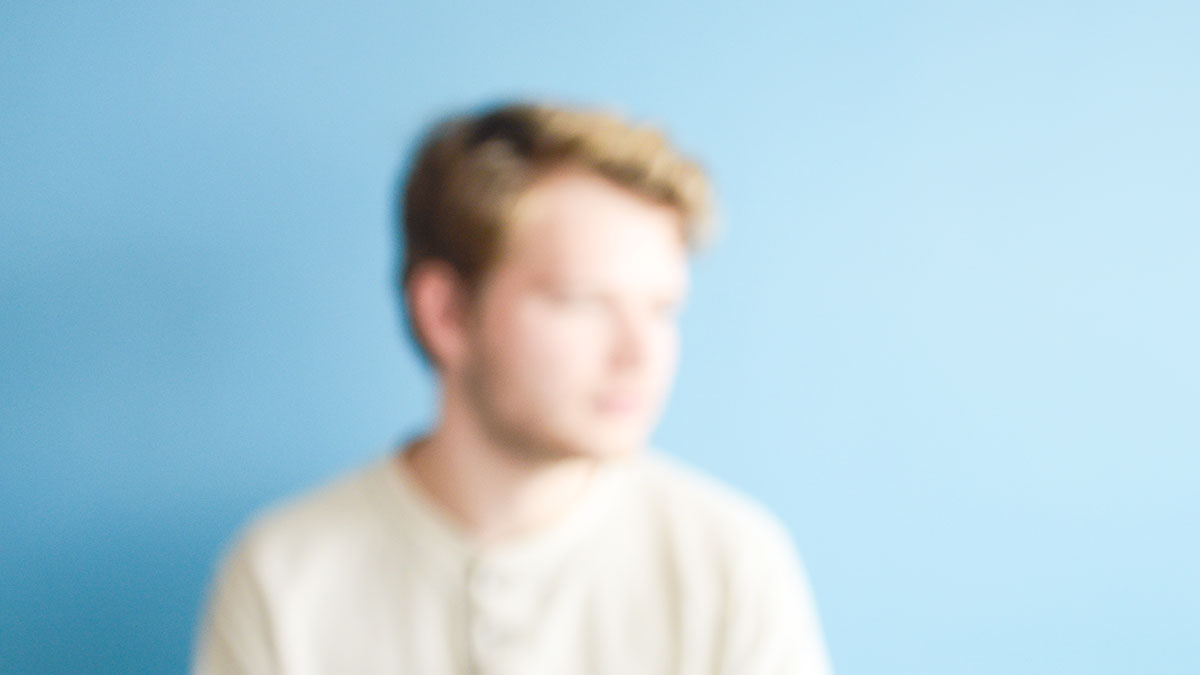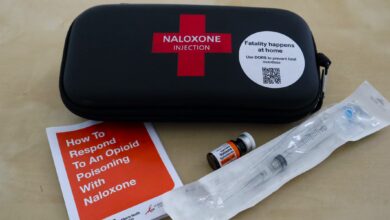Feature: Student Alcoholism
 Alex Patterson
Alex Patterson
Before publishing fiction and poetry in literary magazines, fourth-year English major Jacob Martin was addicted to alcohol and prescription medication.
He says that a number of factors contributed to his addictions, such as his parents’ divorce, a changing sense of self in his teenage years, and most significantly, three diagnosed mental disorders: depression, anxiety and obsessive-compulsive disorder.
“Puberty is when madness is rife to show up,” he says sarcastically.
Martin started drinking heavily in grade 10 and a year later, started abusing Percocet and the benzodiazepines Ativan and Xanax, often while drunk. He says that a major reason his addictive behaviour intensified was because he stopped using drugs with friends and used alone.
“In grade 12 I was isolated. I had burnt so many bridges with so many people. I just didn’t give a fuck anymore.”
His mother insisted he receive treatment after two dangerous episodes, one in which he passed out in a hot tub, and another in which Martin experienced a minor seizure.
Despite the life-threatening incidents, Martin says of his mindset at the time: “It was hard for me to identify myself as an addict.”
***
Summer of 2014 was an unusual time for me. I moved out from the shelter of my parents’ house in Sherwood Park into a house in the city with some friends. It started out great: we hung out, listened to records and spent plenty of time together. But we eventually exasperated each other and discovered we didn’t like each other as roommates. Out of isolation, I drank alone, heavily and regularly.
The university offers a website called Check Yourself that assesses drinking behaviour with an online questionnaire. The program gives a score and a recommendation about what to do.
I scored an 11 on Check Yourself. Anything above 8 is considered ‘problem drinking,’ which is a pre-condition to alcoholism without alcoholism’s loss of control of quantity, frequency or behaviour. A study by the University of Alberta’s School of Public Health reports that 61 per cent of Check Yourself users in the 2013/2014 school year met the criteria for problem drinking. A score of 8 to 10 indicates “a high risk of experiencing alcohol-related harm.” A person scoring in the 11-19 range means that they will already be experiencing alcohol related harm. Like Jacob, I also had a problem.
***
The University of Alberta offers three main resources that deal specifically with substance abuse and addiction, and a few others that offer generalized therapy.
The first is the Addictions Helpline. Calling 1-866-332-2332 as listed on the U of A website results in three ascending electronic tones and a woman’s robotic voice saying “We’re sorry. You’ve reached a number that has been disconnected or is no longer in service. If you feel you have reached this recording in error, please check the number and try your call again.”
The right number is 1-866-332-2322, but an Addictions Helpline representative wasn’t available in time for an interview.
The university also recommends Alcoholics Anonymous. The organization has been recently criticized in The Atlantic for its perceived inefficacy and for its seemingly out-dated and unscientific practices. Alcoholics Anonymous was founded in 1935 and the Big Book, AA’s central text describing how to recover from alcoholism, was first published in 1939. Moral psychology of the era pervades the book while its famous short narratives encourage alcoholics to embrace a higher power. Students would likely find many reasons to be skeptical of such a program, but AA appears to works for many.
The summer after graduating high school, Martin was accepted into an intensive live-in therapy program at UCLA to treat his mental illnesses and addictions. He was forced to attend AA when his specialists found that he continued using while at the treatment centre.
“At first I liked nothing about AA. I thought it was a waste of time because my self-narrative was that ‘I was depressed, so treat me for depression.’ I thought I didn’t need to go to AA with people who looked like ex-convicts.”
But AA’s specific mode of meetings and storytelling appealed to Martin.
“I was most impressed by how accepting all these different people from all these different backgrounds were of each other, and that there was sense of community in this acknowledgment of a shared struggle. There was a deep intuitive understanding of everyone else because you saw yourself in every story that everyone told. And it’s the same story all the time. ‘I did this and told myself this stupid rationalization and I took another drink’ and everyone knows to say ‘Oh, you fucked up.’ And there’s a kind of camaraderie about it at the same time as you’re calling people to a standard. There’s an openness and an acceptance I was craving in a lot of ways.”
The UCLA program focused on treating Martin’s other disorders, and AA was not Martin’s primary treatment for addiction or his mental illnesses. But Martin found many parallels between AA and his primary treatment.
“There’s a depersonalization that needs to take place [if you are to] see yourself as an addict. I split myself into two people. There’s ‘Normal Jacob,’ and ‘Addict Jacob,’ who just wants to hide from his problems. Whenever something scares him or makes him feel bad, he goes to alcohol and drugs. And this [split] is in line with AA stuff. You have to be your own doctor for the patient within you. You have to view yourself as someone who is sick and in need of recovery.”
One of the strongest criticisms directed against AA is the organization’s emphasis on motivating its members to embrace a higher power, but this doesn’t necessarily mean AA members must believe in God. According to Alcoholics Anonymous Australia, “everyone defines this [higher] power as he or she wishes. Many people call it God, others think it is the AA group, still others don’t believe in it at all. There is room in AA for people of all shades of belief and nonbelief.”
Martin adds “There’s a lot of horrible cheesy clichés that are thrown around. But they work. The whole Christian buddy-Jesus thing works very well with the idea of recovery and the notion of ‘One day at a time.’”
AA’s major objective is to motivate its members to cease drinking completely. AA holds open meetings for people interested in observing AA in practice, but becoming an AA member and embarking on the organization’s process of eliminating addiction requires one to be an alcoholic rather than a problem drinker.
A third service the university offers is counselling through Alberta Health Services, which Craig Staniforth, who has worked as a counsellor for 34 years, says can be effective for problem drinking. Staniforth explains how he would treat someone identifying as a problem drinker.
“I would want to get to know who [the client is], then ask more specific questions about their use and have them reflect on how their drinking is affecting them. I would then have them decide what they want to do about it if anything, because the best way to help someone is for someone to help themselves.”
The client is then instructed to self-monitor their own behaviour.
“Many people who have drinking issues or symptoms greatly underestimate how much they use. People don’t generally sit in the bar and say ‘Gee, I’m on my eighth drink now.’ What [counsellors] often do in the beginning is say to students ‘Go away and don’t change your drinking for a while.’ And it’s amazing what people come up with. It’s kind of like when you take out the empties and people say ‘Wow. I didn’t know I was drinking this quantity.’”
A single counselling session often works for problem drinkers. If further treatment is required, Alberta Health Services offers other treatment programs such as group therapy and day programs. On-campus counselling is available through Clinical and Counselling Services and the Peer Support Centre. Depending on the severity of substance abuse or addiction, off-campus treatment might be required. The university offers the resources to find rehabilitation programs.
***
I didn’t seek any form of help for my own problem drinking. I moved back home, which was probably important. But drinking alone in secret takes a lot of work. School started, and I suddenly stopped. And for a while I felt accomplished for having overcoming adversity. I felt a sense of individualism and self-worth that I needed at that time. Martin felt similar when his addictions subsided. I was also suspicious of the mental health institution.
Would a principled individualism that intentionally avoids professional services ever be recommended as a means of eliminating addiction?
“One of the symptoms of the developing addiction is isolation,” says Staniforth. “It’s almost impossible to develop a full-blown addiction while you are intimately connected with yourself and with other people. In many ways addiction is a malady of disconnection.
“When people say they don’t want to see anybody, it’s normal. We all want to do it ourselves in the beginning. But that can be seen as the beginning of disconnection. In order to know what’s happening with me I need to be able to talk about it, I need to be able to get it out in the open with someone who’s objective. I’m self-exploring. If I don’t get that external stimuli to self-explore, then I don’t know myself.”
Mental health professionals don’t want to take away their clients’ agency. They want their clients to regain their own agency.
***
While Martin works as a writer, he admits his past is difficult subject matter to express.
“Its hard to talk about it directly because doing that brings you back to this place you tried so hard to get out of. There’s a danger to it at the same time as there’s the promise of a huge reward. I really feel compelled to write about [my disorders] at some point, if not for myself, because it’s an interesting topic and experience that I had that could possibly help other people who’ve had problems with mental health, or who are interested in that, or who don’t totally buy into the psychiatric model.”
While Martin says that the Western mental health institution has helped him, he remains critical of the system.
“I saw the power dynamics. There’s a certain kind of ugliness to telling people how to think of themselves and there is something awful about realizing you have to listen to these people, otherwise you might die. That’s a really scary feeling.”
Martin started reading philosophy in an attempt to re-conceptualize his worldview. He says the problems aren’t fully solved until one thinks around the principles that structure the mental health institution.
“You [see yourself as] a body needing to carve out this new life. There’s something very violent and crude and damaging to yourself at the same time as it is necessary when you’re in a chronic pattern that is killing you. You have to transcend the whole dualistic thinking, that master/slave, doctor/patient relationship within the recovery model because after a while that thinking can take away what was important about your life to begin with.”
As an alternative to hardline, materialist treatments such as cognitive-behavioural therapy, Martin found Jungian dream analysis and the modern Japanese dance form butoh to be extremely liberating.
Depression recurs in Martin and he’s again on medication. But for the first time since attending the U of A, he’s interested in what the university offers for treatment.
“The ideal model is that you’re both on medication and doing therapy at the same time. Medication is just a way to become productive and efficient again. But by itself, medication is not the solution at all.”




